|
Western Ash Borer (Neoclytus conjunctus) is a handsome black and yellow beetle with long back legs that look like they were borrowed from a grasshopper. It is a member of the Long-horned Beetle family and its larvae burrows into dead and nearly dead wood. It feeds on Western Ash and Oak, but most commonly on Vancouver Island it uses Arbutus (#30). It is often seen when arbutus firewood is being cut during the beetles flight season in late spring and early summer. In flight the black and yellow stripes mimic a wasp, which is a good strategy. Peering at it's face (third photo), one wonders why it would want to mimic a terrier.
There is a useful Oregon State University extension note by M. Bennet and D. Shaw on diseases and insects found on Arbutus that can be found here.
0 Comments
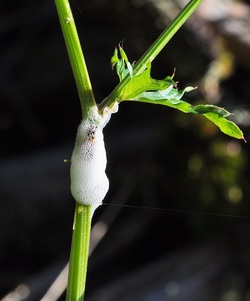 What lurks beneath the bubbly mass? We had featured the Meadow Spittlebug previously (#117) and I had assumed that was what I was going to find, that common European introduction. Except that if you peer at the bubbles in the photograph to the left you can see that there is a bit of red showing. The keys and information on identification that we could find was mainly for the adults, so even this very spiffy nymph, it was difficult to get further than the genus. However, it was found below Douglas-fir, so based on host preference, it is quite likely to be Aphrophora permutata. They range from the Douglas-fir forests of southern B.C. to California. Apparently this genus holds the record for the number of nymphs in one goop of spittle; 100 in a glob 25 cm long! Or so says Andy Hamilton on BugGuide. Do check out the Meadow Spittlebug account for the story of the foam. It really is cool! This is a common fly in the early spring, with adults nectaring on a variety of meadow flowers here at Leaning Oaks. They are round furry-looking flies that are very adept at hovering. The adults are most noticeable in March and April. Bombylius major has an interesting life history; the larvae are parasitoids on solitary bees, such as the Miner Bees. Eggs are laid in or near the burrow of the bee and the larvae hatch and actively seek our the bee larvae in the burrow. In parts of Britain this group of flies are known as Beewhals, because of the long, tusk-like proboscis.
Leah found two of these handsome lady beetles last week by beating the branch of a Douglas-fir. Branch beating , where you give a branch a sharp rap or three with a stick and have the invertebrates on the branch fall onto a sheet or into a net, is a great way to see things you've completely overlooked. Including Painted Lady Beetles (Mulsantina picta). This is an extremely variable species, which ranges in colour from bright red to yellow to solid brown. These mottled individuals are particularly handsome. Regardless of the colour the pattern on the middle section (the pronotal markings) of this beetle is distinctive. Yellow marking on the underside are also a good identification mark.
Not much is known about this lady beetle, it is assumed to eat scales and aphids and is found in conifers across North America. Now (April to June) is the time to be looking for the large skipper, Erynnis propertius nectaring on Garry Oak meadow flowers including camas, vetch and alliums. Propertius Duskywings are just about exclusively tied to Garry Oak habitats. In B.C. that means that they are found on southern Vancouver Island and a few spots on the mainland. The larvae feed on the Garry Oak leaves and require the leaf litter below the trees to overwinter. Males will hang out on hilltops waiting for females. The dependence on Garry Oak meadow habitats means that this species is on the provincial Blue List (S3) because of a small range through the province and the threats that are associated with that habitat. The can be fairly abundant where found, although we rarely see more than an individual or two at anyone time and we haven't seen them every year.
I always thought them a bit drab for a special species that we should get excited about - but looking at this glowing individual in the evening light at the top of the hill, I take that thought back. There are a couple of species of Cladara that are apparently almost indistinguishable, and photographs alone will not allow identification. Except that there is only one that is found on Vancouver Island, Cladara limitaria. I like that when it happens. The other, by the way, should you be looking at green blotched geometrids somewhere else is C. anguilineata. The larva feed on conifers and the adults generally fly April to June. Please imagine the background as a particularly artistic rendition of the star lit night sky in which this critter flies.
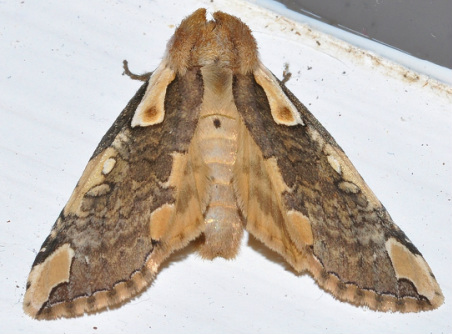 Among the plethora of the spring flying moths, Euthyatira pudens stands out as one of the flashier. The coppery fringe is quite spectacular. As the English name suggests, the larvae prefer to feed on flowering dogwood, but will occasionally feed on oaks and other Cornus species. They range across much of North America - most resources say southern Canada, but they do appear in a checklist of Alaskan moths! Pudens means bashful or modest, not sure how this flashy species got that moniker! 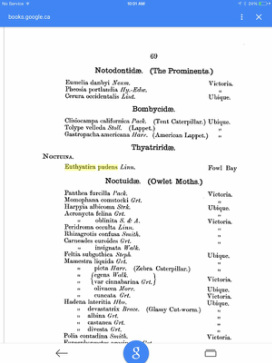 "A Preliminary Catalogue of the collection of Natural History and Ethnology in the Provincial Museum, Victoria, British Columbia" , 1888 (or 1898?), lists this a specimen that had been collected in "Fowl Bay". I assumed that it was just an old name for Foul Bay in Victoria; but apparently Foul is the original spelling. This from Curious Victoria Street Names: "The origin of the name rests with Capt. George Vancouver who surveyed much of the waters around Vancouver Island in the 1790s. On his survey chart of this particular bay he marked it ‘Foul Bay’ because an anchor would not hold bottom so it was a foul anchorage for ships. The name persisted and was transferred to the British Admiralty Chart 577 in 1864, and was formally adopted in 1924." Mostly I got lost in a volume that lists all of the natural history collections at the museum at that time and imagining the natural historians in the field and the curators preparing and cataloging. Today one goes to the online search tool with the jillion (and that is not all of them!) specimens in the collection. 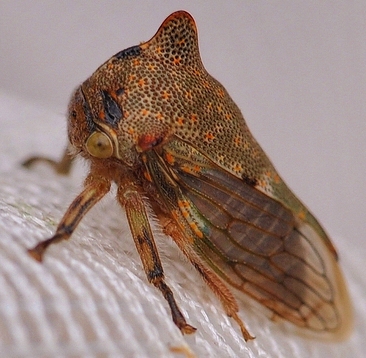 Platycotis vittata has a broad range across North America, distributed somewhat like a horseshoe (as described in BugGuide) along the east and west coasts and across the southern states. it is also found in Mexico and Brazil. Various species of oak, (Quercus spp) serve as hosts. They rarely are in numbers great enough to be a pest. They have five nymphal instars and there are observations of adult females standing guard over colonies of these nymphs, repelling predators. I love that mental image! We have only seen this one small individual, but I plan on searching the oak branches this spring to find more, especially if there are some of the striped stage. The other oddity is that some have a horn, and some don't. Whack, eh? Many of the photographs of this species were of that brightly coloured form or lifestage so when we we went to try and identify what we thought was a distinctly coloured and shaped treehopper we were flummoxed. Help from Syd Cannings and Karen Needham led us here. 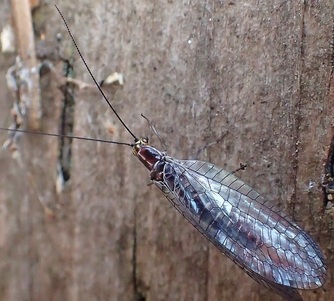 We caught a glimpse of this shiny slender lacewing resting after on one of the fabulously warm March days that we have been having. And although it isn't green in colour, it is a member of the Chrysopidae, or green lacewings. The more common ones are the filmy pale green, clear winged Chrysops sp that are often seen around lights and that can be purchased as part of an integrated pest control program. The larvae are voracious predators of a wide variety soft bodied pests, particularly aphids. One description of the larvae are that they look like tiny alligators. The adults hove into honeydew, pollen or nectar. A bit like growing up in Alberta and moving to the west coast as an adult. I am making a guess that this coastal species, Nothochrysa californica, has similar feeding habits. In Canada it has been recorded from Bowser, Nanaimo, Sidney, South Pender Island, Vancouver, and Victoria and is listed in Geoff Scudder's 1996 priorities for inventory and research in British Columbia. This species was also reviewed as a candidate for federal listing as threatened or endangered in California where it lives in the San Francisco Bay area. 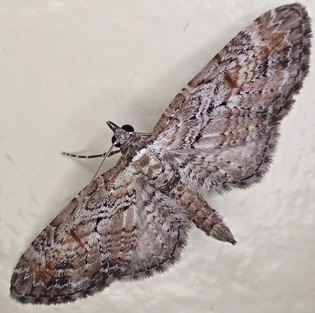 Pugs are a very, very large group of Geometrid moths. Called Pugs, because the hindwings are stubby (pug-winged), the overall effect is the "soaring hawk" look that you can see in the photo here. Pugs are a notoriously difficult group of moths to identify; except apparently Eupithecia graefii. The person that confirmed this on Bug Guide mentioned the "red/brown distal spot" as a diagnostic feature. The Victoria Natural History Society expert, Jeremy Tatum concurred with this identification. Edward Graef was an entomologist from Brooklyn, NY that was very active in taxonomy and collecting in the late 1800's. The larvae of E. graefii feed on arbutus and manzanita and is relatively common along the west coast of North America. Most sightings and specimen collections of adults are from late April through the summer. That this one was out on February 15th speaks to the incredibly mild weather that we have been having. 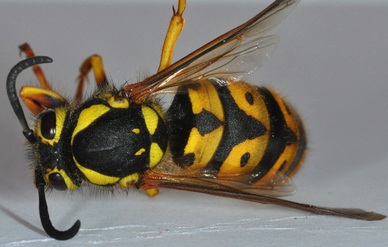 The Western yellowjacket queens overwinter and usually emerge March to April when they go to look for a new nest. Apparently they won't reuse a nest from a previous year. The warm weather of the past few weeks may have brought this one out early - she was found in a malaise trap that we have on the property. Western yellowjackets (Vespula pensylvanica) are social, underground nesters and as many know, they will repeatedly sting and and aggressively protect these nests. There are records of nests (not at Leaning Oaks!) that have over 2000 workers in one nest! They can become a nuisance on their up years when the larvae start to grow and they require copious quantities of protein for which they aggressively scavenge! You know what I mean - no piece of salmon goes untouched. In their quest for proteins they do feed on caterpillars, flies, aphids and scavenge on carcasses; so it is not all bad! The workers chew up the protein and feed the larvae the chewed up food. The adults will eat some of the liquids from these chewed up delicacies, but they mainly feed on plant nectar. As they do this, they are also aiding pollination - another reason to let them be when possible. The adults require carbohydrates to maintain their zippy life style; thus the sweets on the table or heading towards your mouth are targets. 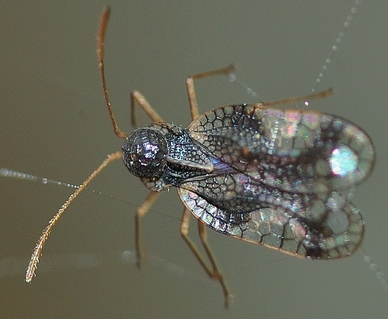 Stephanitis takeyai was introduced in eastern North America in 1946 from Japan and can be a serious pest in the nursery trade on Pieris japonica. The first record from BC was 2001 in Richmond on a P. japonica (Scudder 2004). This wee tingid was caught in a spider web, so we don't know what the host was on Leaning Oaks as we are Pierisless. We do have a few of the less common hosts, Rhododendron, Azalea and Salix. We will now be watching for yellowing and mottling on the upper side of the leaves, one sign that they are feeding on the underside. Apparently there can be four to five generations per year in Connecticut where there has been research done on this pest. I couldn't find anything on generation time for the population in the west. Scudder, G.. Heteroptera (Hemiptera: Prosorrhyncha) New to Canada. Part 2. Journal of the Entomological Society of British Columbia, North America, 101, 2004. Available at: <http://journal.entsocbc.ca/index.php/journal/article/view/76>. Date accessed: 13 Feb. 2015. These spunky little beetles are found through the winter in the moist undergrowth searching out decaying plant matter or animal tissue to scavenge. This individual was cleaning the last of the meat, fat and soft bits from a young deer that had died at Leaning Oaks. Necrophilus hydrophiloides and others of their ilk play a very important role by recycling the nutrients through the coastal forest from the Alaskan panhandle to California. And cleaning things up!
They are part of the Primitive Carrion Beetle family (Agyrtidae). They were once considered to be a subfamily of the Carrion Beetles (Silphidae). Look for the grooved elytra in the primatives to distinguish the families. 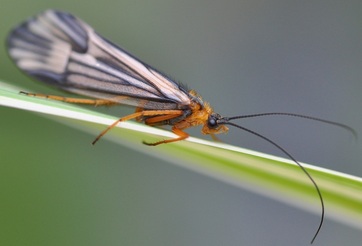 This caddisfly, (Halesochila taylori), usually found as an adult during the month of October is a dapper fellow, with Halloween colours of orange, black and white. It is sometimes called the October Caddisfly and is restricted to northwestern North America (Alaska, BC, Alberta, Montana, Idaho, Washington and Oregon). It is a species of of still waters; the larvae found in lakes and ponds. This adult was perched on a cattail leaf in the pond.  Cryptic and dorsolaterally flattened, these beautiful bugs (in the truest sense of the word) are most often encountered on wood from the woodpile or only on very close inspection of a tree trunk. They feed on leaves and seeds and occasionally caterpillars or small beetles. They overwinter as adults and in the spring lay eggs that will hatch in a few weeks. The first adults are seen in August sometime. There are two species of Brochymena in BC and I definitely don't feel confident enough to say which this is ...but I am leaning towards B. affinis, the other option being B. quadripustulata. * *Yea! The wonderful folks at BugGuide.net have confirmed that it is B. affinis. The larva of this long horned beetle feed under the bark of Douglas-fir. It is found through western North America -and despite the name that sounds quite pest-like, apparently it is not. The scientific name is Centrodera spurca. There you have it. If anyone knows any juicy tid bits about this relatively common showy beetle, please share!
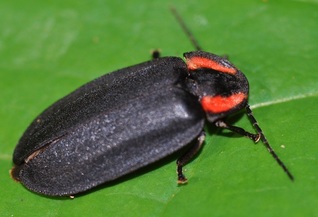 Sadly these spiffy beetles are nonluminescent beetles , so despite their name they do not fly around at night producing delightful bursts of light from their backsides. They are active during the day, another departure from what I always believed about fireflies. This species, Ellychnia hatchi is relatively common in the pacific northwest. The larvae live in rotting logs and feed on a variety of invertebrates, including earthworms, millipedes, spiders and other larvae. All larvae of the family Lampyridae have light emitting cells--I guess this means digging around rotting stumps at night to see if they glow! Another oddity of this family is that their blood is poisonous and as adults it oozes from the base of their wing covers as a defense mechanism. This looper, a member of the Geometridae turns into a rather dapper brown and white, but fairly un-extraordinary looking moth. These two larvae were found feeding on Douglas-fir. According to the "Conifer Defoliators of British Columbia" by Bob Duncan, this species is a relatively uncommon defoliator that is not found in colonies.
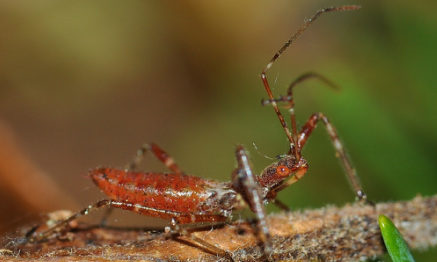 I laughed so hard when I saw this little guy; he so looked like something out of Dr, Suess! Dr. Rob Cannings brought me back to reality by identifying it as an immature member of the Reduviidae, or Assassin bugs, possibly Rhynocoris ventralis. There has been some very nifty natural history observations of parental care within assassin bugs where the parent actively guards their clutch against predators or parasites. This sort of behaviour is highly unusual in the invertebrate world.  In an attempt to narrow down the possibilities for which species of red-tailed Sarcophaga this was I started with looking for a list of flesh flies from B.C.. I came across a paper by Buckell and Spencer from 1945 in the Entomological Society of B.C.'s journal titled; A Preliminary List of the Flesh Flies of B.C.. Now what I found the most amazing was that out of the 27 species identified at that time for the province, 14 had been reared from the lesser migratory grasshopper, Melanoplus mexicanus! Cool, eh!? We don't know where the larva of this fly lived, but it would have been some moist, decaying matter or carcass. Members of this genus are often the first to arrive at a freshly dead corpse and therefore are important in the oh so fascinating study of forensic entomology. The rate of egg hatching and larval development at various temperatures and different conditions has been studied in depth in order to aid detectives that are attempting to pinpoint times of death. I remember being in one talk at an entomological conference where the researcher said that the best thing that a murderer could do was dump a body under a weather station (hmm, it seemed funny at the time...). |
AuthorsTwo biologists on a beautiful property armed with cameras, smart phones and a marginal knowledge of websites took up the challenge of documenting one species a day on that property. Join along! Posts and photographs by Leah Ramsay and David Fraser (unless otherwise stated); started January 1, 2014. Categories
All
Archives
May 2025
|
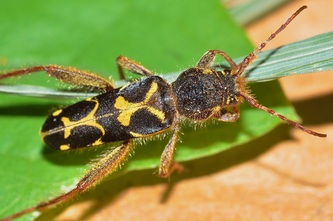
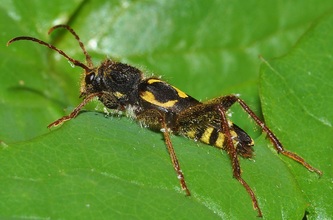
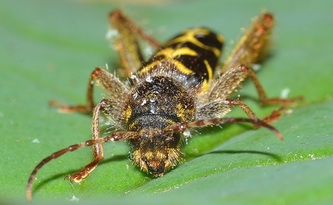
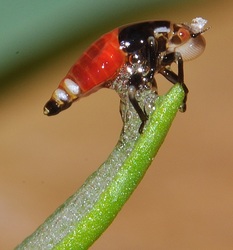

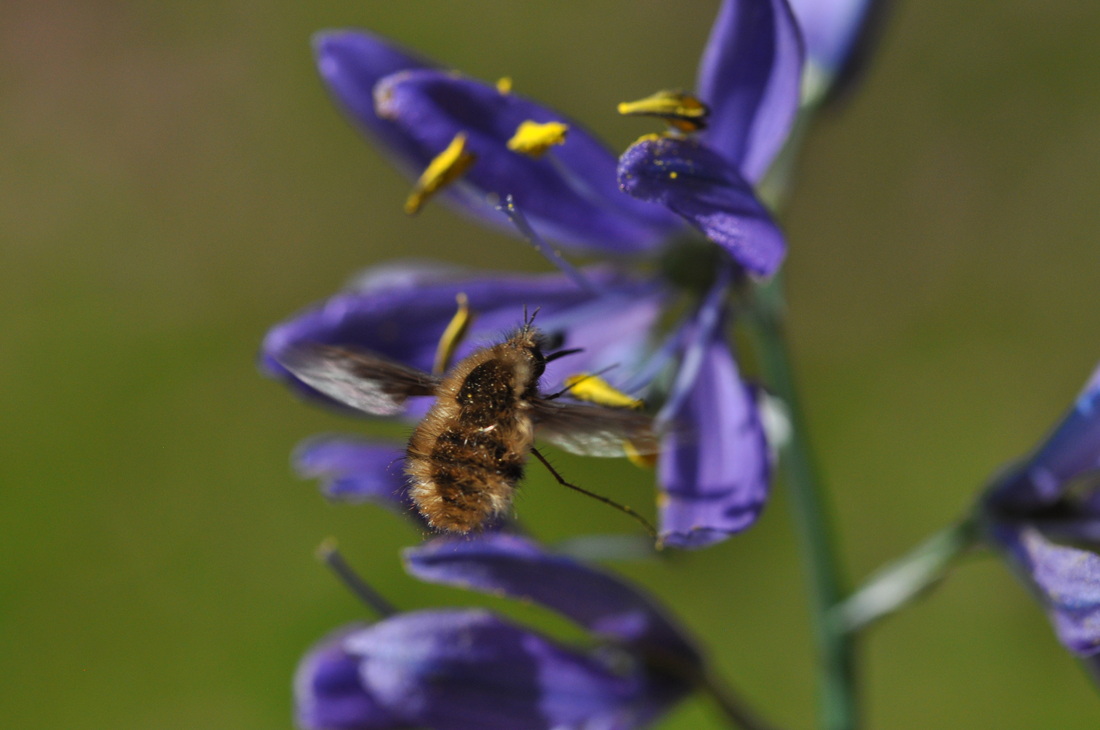

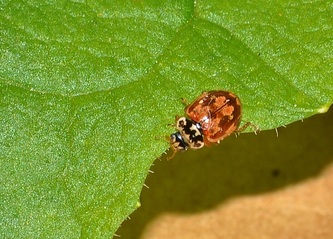

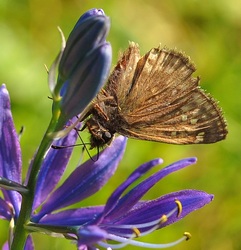
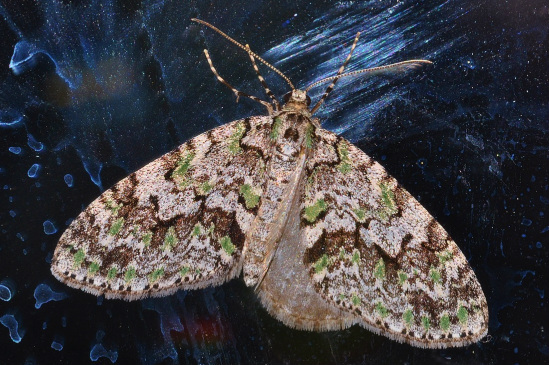
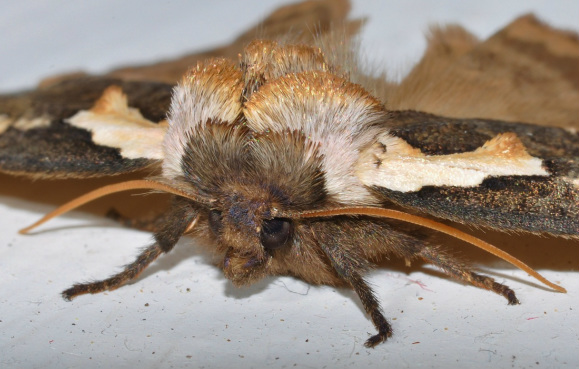
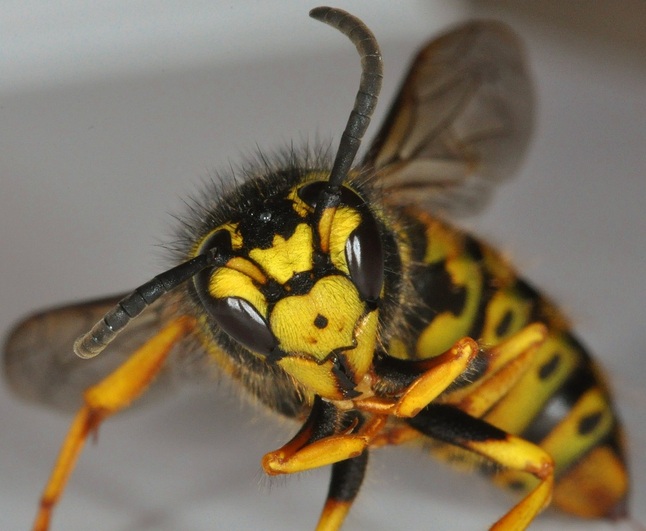

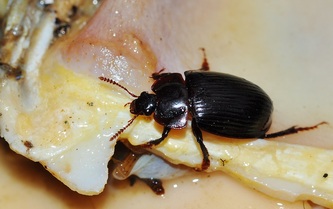
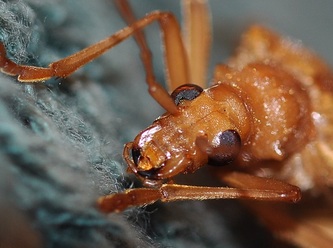
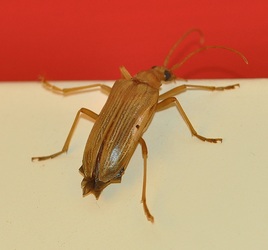
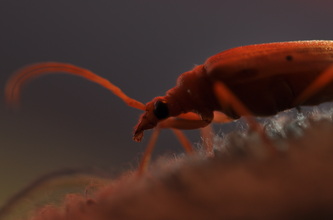
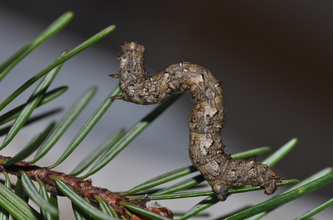
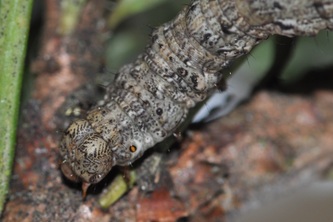
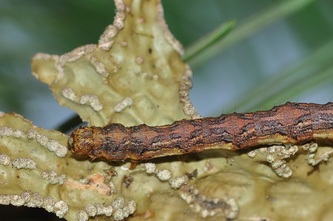
 RSS Feed
RSS Feed